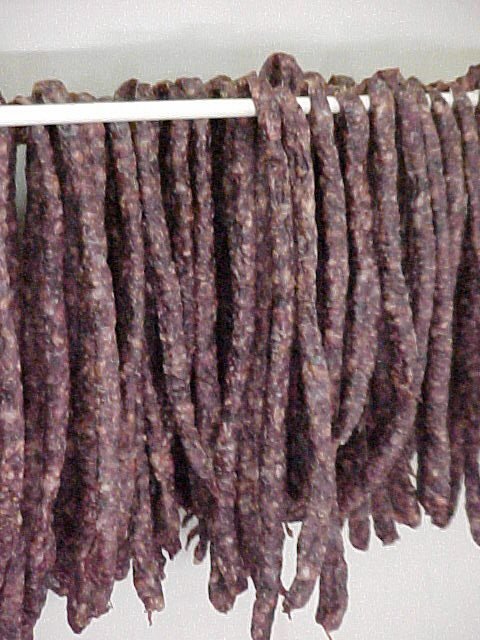
BOEREWORS
Boerewors (farmer's sausage) is as traditionally South African as Biltong, Koeksisters, Pap (maize porridge) and Vetkoek (fat cake). "Boeries" as it is affectionately know by locals, is staple fare in South Africa. It is wholesome, delicious and reasonably inexpensive. Above all, it tastes like nothing else on the rest of this planet!
HISTORY
Boerewors is another inheritance from our pioneering forefathers who used to combine minced meat and cubed spek (pork and/or beef fat) with spices and preservatives (vinegar) which were freely available from the then Cape Colony.
During their trek through the hinterland large quantities of wors would be made during their outspan (stopover) and that which could not be eaten would be hung to dry and taken along for sustenance as they continued their explorations.
In the decades that followed this type of wors gradually evolved and the term "Boerewors" became entrenched in our culture.
Up until the early 1960's boerewors in South Africa was know only as boerewors and by no other name. Thousands of butchers vied with each other to produce, in their opinion, the best "boeries" you could find anywhere. Competition was fierce, the consumer was happy! The unique taste of boerewors was enhanced by making adjustments to the quantities of the traditional ingredients used. Some masterful "boeries" was, and still is, produced with the creators jealously guarding the mix of their magic potions.
From the 60's onward however, the character of the traditional boerewors taste was experimented with by entrepreneurs who added a host of additional flavours to the boerewors taste. Copious quantities of barbecue spice, onion, tomato, garlic, cheese, chillies, peppers, chicken and, you name it, were added in order to diversify the taste of the good old "boeries". On the market was now garlic wors, chilli wors, cheese wors, chicken wors etc. etc. Many consumers, naturally, enjoyed these variations. Others, obviously, called it sacrilege. These additions to the taste of boerewors had, however, come to stay and are still freely available today.
The 60's, unfortunately, also experienced the advent of inferior quality boerewors that was sold at bargain prices to the poor but contained inferior ingredients. Although the traditional and "new type" spices were still used, inferior meat such as offal, bone meal and soya became the main ingredients. To contain this mixture the thickest possible sausage casings were used in order to avoid the wors from rupturing during cooking.
Public outcry soon curtailed the production of this boerewors abomination as the perception that "cheap wors is bad wors" soon resulted in this product not moving from the retail shelves. Unfortunately, to this very day, a boerewors producer will tempt the bargain hunter with inferior wors.
The secret in the making of good boerewors lies in the quality of the ingredients used. The better the quality of the meat the better tasting the boerewors.
DROË WORS
(dried sausage)

surely very tasty this food @bosveldtzaneen, is it sold in various places with a cheap price .. ??
but always better if you make it your self
but better if you make it your self
@suzuki1 This stuff is lekker, bru ; )
Hi! I am a robot. I just upvoted you! I found similar content that readers might be interested in:
http://www.youtube.com/watch?v=yTUmFSHyuVM